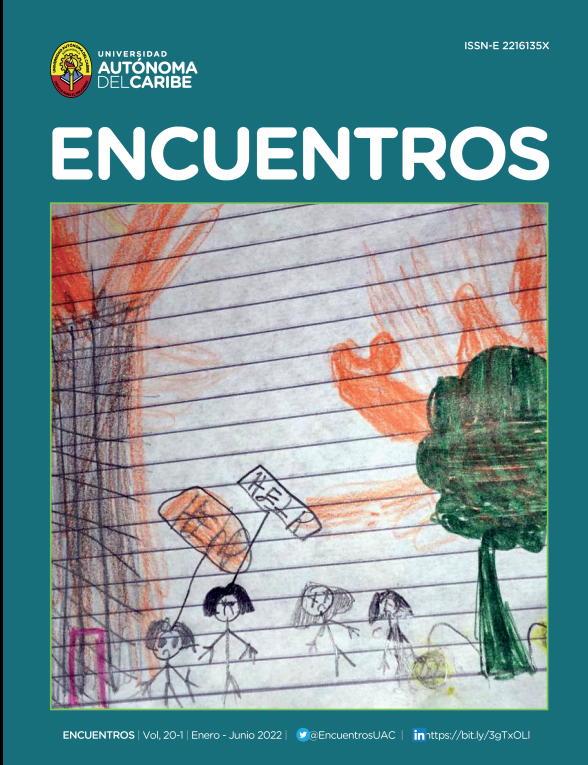Teleworking: its impact on workers in the city of Chillán, Chile
DOI:
https://doi.org/10.15665/encuen.v20i01.2749Keywords:
Teleworking, Health crisis, disbursements for teleworking productsAbstract
Teleworking is a form of remote work performance in which the worker is not present in the company, using computer and telecommunication tools. As a result of the contingency due to the covid-19 pandemic, many companies found it necessary to implement it hastily and without measuring consequences. The objective of this study is to determine the impact teleworking has on workers as a result of the health crisis. A properly validated multiple-choice questionnaire was applied to 160 people and the selection was non-probabilistic, for convenience. It was divided into four sections. The first of them included the characterization of the respondents, the second referred to income, expenses and investments, the third included the reconciliation of work and family and, finally, the level of ICT knowledge that teleworkers had is included. The main conclusions are that they are unable to finish their work within their ordinary working hours, they do not reconcile work life with family life, which have increased their feeling of stress; and that Law 21,220 is not clear in terms of discriminating between the expenses of the company and those of the home
References
Barbosa, V. K. (2013). Teletrabajo, Liderar y Trabajar en Equipos a distancia. Editorial Dunken.
Carangui, P., Garbay, J., y Valencia, B. (2017). Finanzas personales: la influencia de la edad en la toma de decisiones financieras. Revista Killkana Sociales, I(3), 81-88.
Di Martino, V. (2004). El Teletrabajo en América Latina y el Caribe. Proyecto, Centro Internacional de Investigaciones para el Desarrollo, Ginebra.
Díaz, V. (2008). El teletrabajo como fuente de pleno empleo. Revista de Derecho Informático, 121.
Dirección del Trabajo (2020). ¿Se puede pactar alguna asignación especial por concepto de costos de operación y funcionamiento en el teletrabajo y trabajo a distancia? Centro de Consultas. Recuperado el 13.10.2020, de dt.gob.cl: https://www.dt.gob.cl/portal/1628/w3-article-118668.html.
Flórez, L. (2008). Evolución de la Teoría Financiera en el Siglo XX. Ecos de Economía (27), 145-168.
Icaran, A. (2020). El Teletrabajo llegó para quedarse. Hr Connect.cl. Recuperado el 16.10.2020 de: https://www.hrconnect.cl/tendencias/el-teletrabajo-llego-para-quedarse/
Infobae. (2020). La mitad de la fuerza laboral de EEUU hace teletrabajo y todo indica que seguirá así luego de la pandemia: Recuperado el 16.10.2020 de: https://www.infobae.com/america/eeuu/2020/07/03/la-mitad-de-la-fuerza-laboral-de-eeuu-haceteletrabajo-y-todo-indica-que-seguira-asi-luego-de-la-pandemia/
Ionos (2020). Teletrabajo y familia: cómo manejar las situaciones de estrés. Ionos.es. Recuperado el 13.10.2020, de: https://www.ionos.es/startupguide/productividad/teletrabajo-y-familia/
República de Chile (2020). Ley Nº 21.220. Publicación Diario Oficial de la República de Chile.
Lubiza, O. H. (2010). El Teletrabajo: Una opción en la era digital. Observatorio Laboral Revista Venezolana, 3(5), 93-109.
Martínez, R. (2020). Estrategias creativas realizadas por empresas en tiempos de crisis. Blog.atrivity.com. Recuperado el 16.10.2020, de: https://blog.atrivity.com/es/teletrabajo-para-combatir-situaciones-crisis
Metzger, J. y Cleach, O. (2004). Le télétravail des cadres: entre suractivité et apprentissage de nouvelles temporalités. Sociologie du travail. 46(4), 433-450.
Pérez, C., Galvez A. (2009) Teletrabajo y vida cotidiana: Ventajas y dificultades para la conciliación de la vida laboral, personal y familiar Athenea Digital - núm. 15: 57-79.
PageGroup (2 junio 2020). ¿Cuántos están teletrabajando en América Latina durante la pandemia? El Tiempo. Recuperado el 7 de Junio 2021 de https://www.eltiempo.com/economia/sectores/teletrabajo-estudio-revela-que-el-96-de-organizaciones-en-america-latina-lo-implemento-502154
Prevención integral (2020). El dato del día: ¿cuántas personas han empezado a teletrabajar a consecuencia del coronavirus?. Prevención integral.com. Recuperado el 08.10.2020 de: https://www.prevencionintegral.com/actualidad/noticias/2020/05/20/dato-dia-cuantas-personas-hanempezado-teletrabajar-consecuencia-coronavirus.
Reasonwhy. (2020). Buceamos en el origen y el concepto de Teletrabajo. ReasonWhy.es. Recuperado el 23.10.2020, de: htts://www.reasonwhy.es/actualidad/teletrabajo-concepto-historialegislacion-espana
Romero, M., Peña, O., Escobedo, G., y Marcías, A. (2016). Elementos objetivos y subjetivos en la calidad de vida de hogares en Yehualtepec. Puebla, México.
Rubio, R. (2010). La transformación de los mercados laborales: el teletrabajo y sus alcances para el caso de Santiago. Revista de Geografía Norte Grande, 45. 119-134.
Salazar, C. (2007). El teletrabajo como aporte a la inserción laboral de personas con discapacidad en Chile: una gran carretera virtual por recorrer. Ciencia & Trabajo. 25, 89-98;
Sanguineti, W. (2003). Teletrabajo y globalización: En busca de respuestas al desafío de la transnacionalización del empleo, Madrid: Ministerio de Trabajo y Asuntos Sociales. Salamanca, España: Dirección General de la Inspección de Trabajo.
Soto, J. (2019). Evaluación y Análisis Cuantitativo y Cualitativo del Sistema del Teletrabajo Implementado en el Instituto Nacional De Propiedad Industrial (INAPI). Tesis para optar al grado de Magíster en Gestión y Políticas Públicas, Santiago de Chile.
UNED. (2008). Programa de teletrabajo. Testimonio de teletrabajadores. Uned.ac.cr. Recuperado el 23.10.2020, de: https://www.uned.ac.cr/viplan/teletrabajo/testimonios-de-teletrabajadores
Zanatta, M. (2020). Cómo gestionar los gastos extraordinarios derivados del teletrabajo. captio.net. Recuperado el 14.10.2020, de: https://www.captio.net/blog/gastos-extraodinarios-teletrabajo.
Downloads
Published
How to Cite
Issue
Section
License
Copyright (c) 2022 Alex Iván Medina-Giacomozzi, Cecilia del Pilar Gallegos-Muñoz, Marlene Patricia Ramirez-Muñoz, Camila Soledad Mora-Sepúlveda

This work is licensed under a Creative Commons Attribution-NonCommercial-NoDerivatives 4.0 International License.
Proposed Policy for Open Access Journals
Authors who publish in this journal agree to the following terms:
- Authors retain copyright and grant the journal the right of first publication, with the work registered under a Creative Commons Attribution License, which allows others to use the published work as long as the authorship and first publication in this journal are acknowledged.
- Authors can enter into additional contractual agreements for the non-exclusive distribution of the published version of the article (e.g., include it in an institutional repository or publish it in a book) as long as the first publication in this journal is acknowledged.
- Authors are allowed and encouraged to post their work online (e.g., on institutional or personal websites) before and during the submission process, as this can lead to productive exchanges and a greater and faster dissemination of the published work (see The Effect of Open Access).


